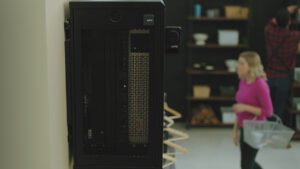When companies think about providing physical security for their data centers, they most likely envision video surveillance cameras and identity card readers attached to entry doors. In other words, they think about data center threats caused by humans with bad intentions.
While that’s certainly a significant threat, the types of physical security threats companies should protect against extend well beyond the human variety. And while it’s common for companies to have sophisticated monitoring systems in place to keep an eye on their UPSs and computer room air conditioning (CRAC) systems, how many monitor for liquid leaks that can result in damage to data center floors, cabling and perhaps server racks? At the same time, you need to consider remote locations such as branch offices, network closets and even local point-of-sale locations; anywhere where it’s not practical to rely on people to physically check on conditions such as temperature and humidity.
Physical threats fall into five general categories:
1) Air quality threats to IT equipment (temperature, humidity)
2) Liquid leaks
3) Human presence or unusual activity
4) Air quality threats to personnel (foreign airborne substances)
5) Smoke and fire from data center hazards
Mitigating these threats requires various monitoring systems, each configured to a sufficient level of detail for the threat they address. The trick is knowing what to monitor and keeping in mind some best practices in terms of monitor placement and data collection.
For example, because excessive air temperatures can cause equipment failures, sensors are required to monitor temperatures of the room, rack and equipment. Ideally, sensors should be placed at the top, middle, and bottom of the front door of each rack, to monitor inlet temperature of devices in the rack. In network closets or other open rack environments, temperature monitoring should be as close as possible to equipment air inlets.
Humidity can likewise cause equipment problems, from condensation buildup at high humidity levels to static electricity buildup that can cause equipment failures at low levels. To ensure proper humidity levels, place a humidity sensor in each cold aisle, at the front of a rack in the middle of the row. Also, because CRAC units provide humidity readings, location of row-based humidity sensors may need to be adjusted if they are too close to CRAC output.
To monitor liquid leaks, place rope leak sensors around each CRAC system, around cooling distribution units, under raised floors and near any other potential leak source, such as pipes. Additionally, spot leak sensors should be used to monitor fluid overflows in drip pans, in smaller rooms and closets, and in any low spots.
The best way to monitor for unauthorized human activity is to use digital video cameras, strategically placed to cover all entry and exit points and to provide a good view of all hot and cold aisles. Monitor and record both normal access as well as after-hours access with video surveillance software. If digital video is too pricey, motion sensors are a lower cost alternative.
Vibration sensors are another good idea, especially for high-traffic data centers. They can help detect unauthorized installation or removal of equipment. Similarly, glass-break sensors on each data center window, even those that lead to internal hallways, can help detect break-ins, especially when used in conjunction with video surveillance.
Learn more about how to keep your data center safe by reading the APC by Schneider Electric white paper, Monitoring Physical Threats in the Data Center.



